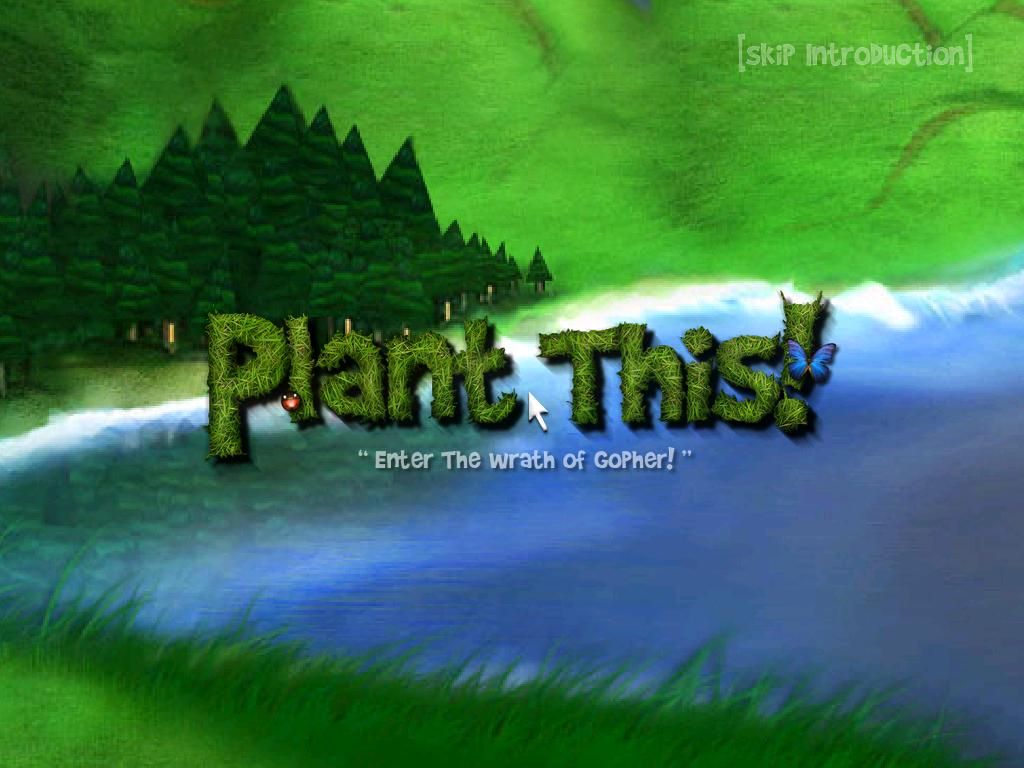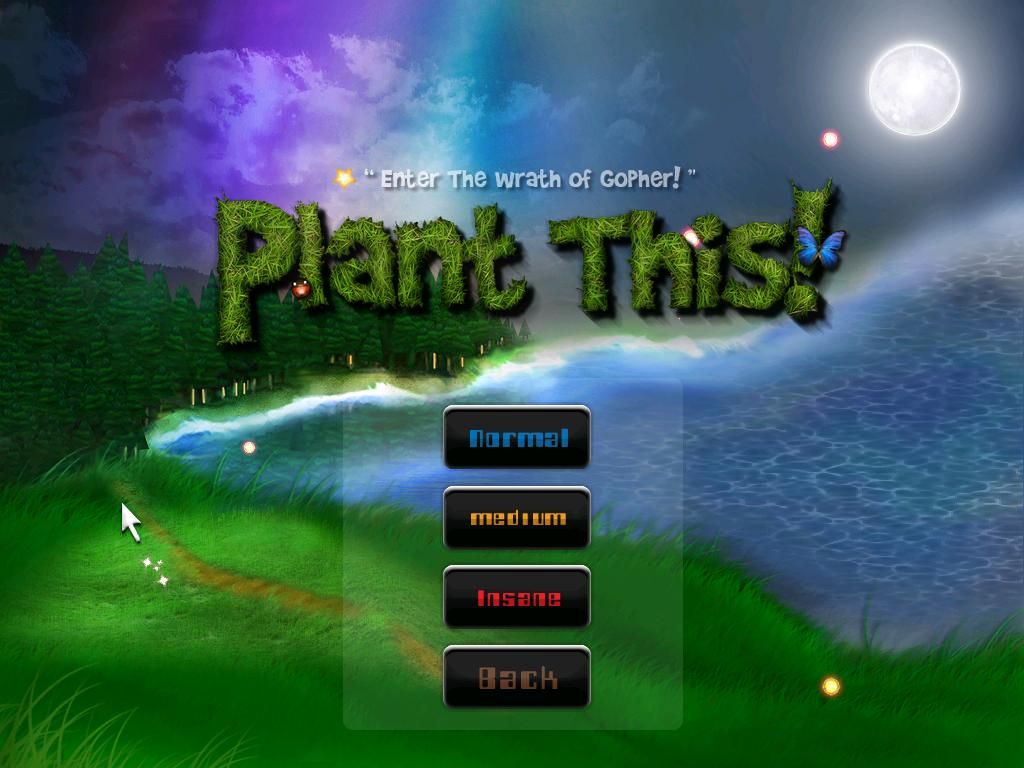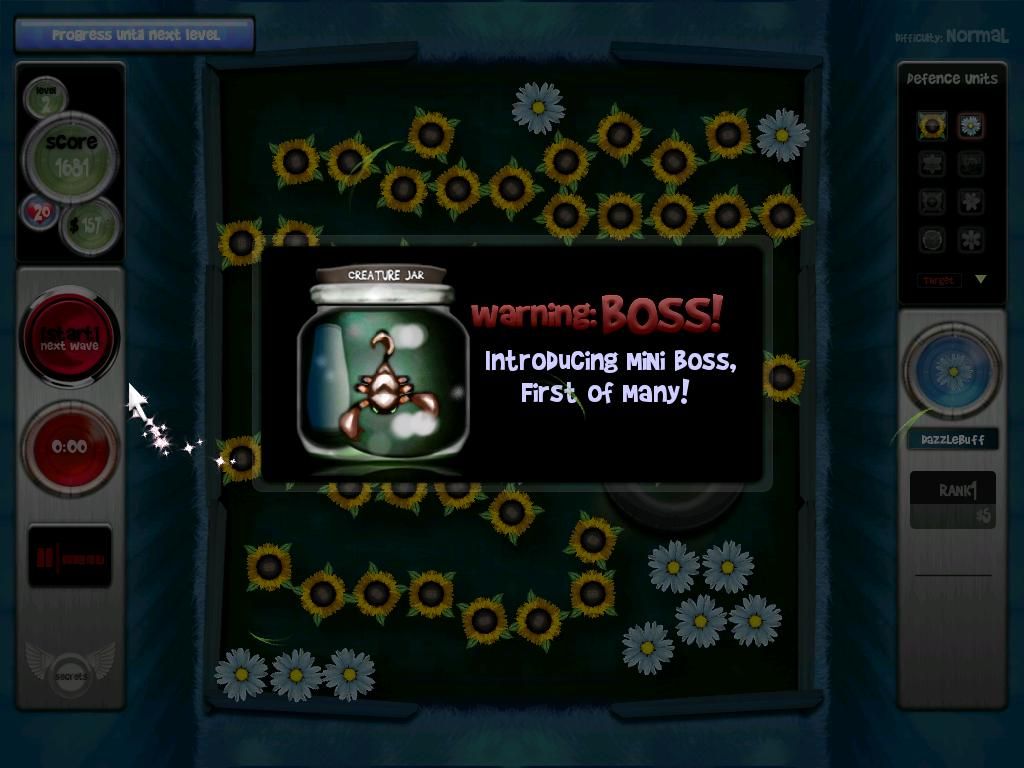Retro Replay Review
Gameplay
Plant This! delivers a charming twist on the tower-defense genre by asking you to cultivate and strategically arrange a variety of flowers to fend off Gopher’s relentless army. The core mechanic revolves around using your mouse to plant blooms in a way that forms an intricate maze. Enemies, lacking battlefield intelligence, wander through your floral labyrinth, taking longer to reach the bottom of the screen and giving your blossoms more time to inflict damage.
The game strikes a satisfying balance between placement strategy and resource management. Each fallen foe drops money that you can reinvest in either purchasing new flower types or upgrading existing ones. Upgrades not only boost firing rate and damage but introduce special abilities—stunning shots or area-of-effect bursts—that become essential as enemy waves grow tougher and faster. Deciding when to upgrade an existing sunflower versus saving up for a daisy or stun-flower adds a compelling layer of risk and reward.
One of the standout features is the mandatory maze-building element. Unlike typical tower-defense titles that allow you to wall off entire paths, Plant This! requires you to leave at least one opening, encouraging creative layouts that funnel enemies through chokepoints. This constraint feels fresh and prevents “cheese” tactics, rewarding thoughtful planning over brute force. As stages progress, you’ll find yourself redrawing your garden after each wave, weaving ever-more elaborate tunnels to maximize flower firetime.
In late levels, rapid enemies and heavily armored units test the limits of your garden’s defenses. Here, upgrading becomes not only about damage but crowd control. Investing in stun-flowers or slowed-movement varieties can turn what seems like an overwhelming horde into manageable clusters of targets. The pacing ramps up nicely, ensuring that each new wave demands a quick reassessment of your flower lineup and garden layout.
Graphics
Visually, Plant This! is a delightful, cartoon-inspired feast for the eyes. Each flower type boasts a unique design, from the stately sunflower with its broad petals to the daisy’s frenetic, spindly form. Enemies vary in color and shape, making it easy to distinguish between standard grunts and tougher “boss” units at a glance. The animation—be it a petal’s recoil when firing or an enemy’s stagger when stunned—is smooth and adds personality without cluttering the screen.
The garden backdrop evolves subtly as you advance, transitioning from a neatly trimmed lab courtyard to overgrown fields peppered with grass tufts and winding vines. This gradual change in scenery helps convey your journey from the sterile government facility where Gopher was born to the wide-open world where you must now hide. Particle effects, like pollen bursts upon an enemy’s defeat, are modest but fitting, lending each victory a small flurry of visual satisfaction.
Despite its modest system requirements, the game runs flawlessly on mid-range hardware, maintaining a consistent frame rate even during intense later waves. Menus and UI elements are cleanly laid out, with clear icons for each flower type and intuitive upgrade paths. The game’s color palette—bright greens, pastels, and earthen browns—creates a soothing overall aesthetic, contrasting nicely with the underlying urgency of wave-after-wave assaults.
While hardcore graphics junkies won’t find ray-tracing or ultra-high-poly models here, Plant This! embraces a stylized approach that feels cohesive and lovingly crafted. The simplicity of the art style ensures that gameplay remains the focus and that each element on screen is easily readable, even when chaos reigns in the center of your garden maze.
Story
At its heart, Plant This! offers a surprisingly poignant backstory centered on Gopher—a laboratory subject raised by a wise old professor deep within a secret government facility. Their bond develops as Gopher grows inquisitive, and when the professor faces imminent death, he tasks Gopher with escape and survival. It’s a touching motivator that frames Gopher’s later motives and adds emotional weight to the game’s seemingly whimsical premise.
The narrative unfolds primarily through brief cutscenes and in-game text snippets before each stage. These vignettes hint at Gopher’s continued loyalty to his mentor’s message of protection and resistance. While the story is straightforward, it feels appropriate for a defense-oriented experience and provides enough context to keep players invested in the garden’s fate and Gopher’s ultimate goals.
There are occasional narrative surprises—encrypted messages from the old professor, fleeting visions of the facility labs intruding on the pastoral battlefield—that add a subtle sci-fi flair. These moments break up the gameplay loops nicely, offering a short narrative breather and a reminder of the experiment that brought Gopher to life.
Although Plant This! is not a story-driven epic, it strikes the right chord for the genre. The emotional core between Gopher and the professor elevates the otherwise lighthearted defense mechanics, giving purpose to your horticultural stand against the invading army and leaving you curious about what might come next.
Overall Experience
Plant This! succeeds by combining intuitive tower-defense mechanics with an endearing aesthetic and a modest yet engaging narrative. The learning curve is gentle, enabling newcomers to grasp planting and upgrade strategies quickly, while the later waves demand a level of tactical finesse that keeps seasoned players on their toes. The mandatory maze layout adds a layer of creativity seldom seen in the genre and ensures each playthrough feels like you’re sculpting a unique botanical fortress.
The game’s progression system—unlocking new flower types, experimenting with stunning or slow-moving varieties, and balancing upgrade paths—provides ample replay value. Leaderboards for fastest clear times and fewest upgrades used add optional challenges for completionists and competitive spirits.
One minor drawback is that the storyline, while charming, remains relatively thin. Players seeking a deep narrative adventure may find the cutscenes and text snippets too sparse. However, for fans of strategy and creative puzzle design, the story serves as an adequate backdrop without detracting from the core defense gameplay.
Ultimately, Plant This! offers a refreshing take on tower defense, complete with a lovable protagonist, inventive level design, and enough tactical depth to hold your attention through dozens of waves. Whether you’re a casual gamer looking for a relaxing garden simulation with a twist, or a strategy enthusiast hungry for smart enemy AI and upgrade planning, this title is well worth planting your roots in.
 Retro Replay Retro Replay gaming reviews, news, emulation, geek stuff and more!
Retro Replay Retro Replay gaming reviews, news, emulation, geek stuff and more!









Reviews
There are no reviews yet.